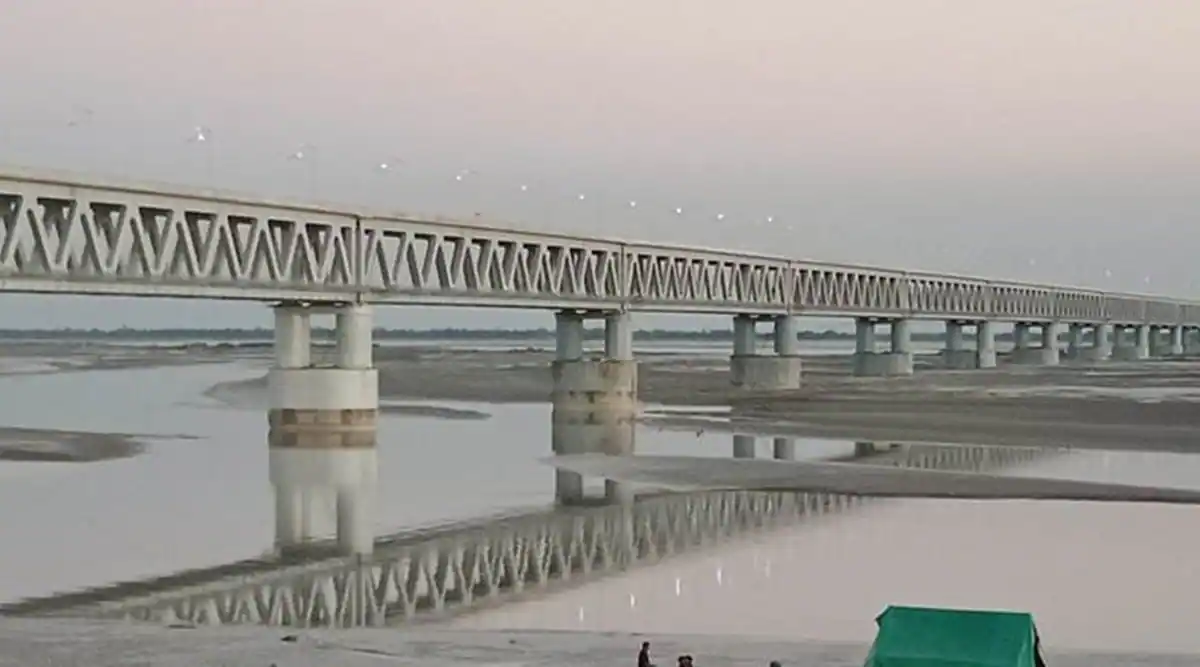Free Courses Sale ends Soon, Get It Now


Free Courses Sale ends Soon, Get It Now



Copyright infringement not intended
Picture Courtesy: www.jansatta.com
Context: The Union Minister for Road Transport and Highways announced the approval of seven bridge projects under the Setu Bandhan Scheme in Arunachal Pradesh for the fiscal year 2023-24. These projects, with a cumulative cost of ₹118.50 Crores, aim to enhance connectivity across different regions and foster economic development in the state.
Approved bridges include
Setu Bandhan Scheme
About
|
Types of Bridges Covered
|
●Road Over Bridges (ROBs) and Road Under Bridges (RUBs): The scheme aims to eliminate level crossings on national highways, enhancing safety and efficiency of transportation. ●Bridges on State Roads and Major District Roads: Improved connectivity on state roads has bolstered regional trade and connectivity, benefitting local economies significantly. |
|
Cost-sharing Mechanism |
●The Setu Bandhan Scheme operates on a cost-sharing basis between the Central Government and the State Governments. This collaborative effort ensures sustained development and equitable distribution of resources. |
|
Maintenance and Rehabilitation |
●In addition to constructing new bridges, the scheme also emphasizes the maintenance and rehabilitation of existing ones. This holistic approach ensures the longevity and functionality of infrastructure, guaranteeing long-term benefits to the communities. |
Significance of the Setu Bandhan Scheme
|
Enhanced Connectivity |
●By connecting remote villages with towns and cities, the scheme facilitates easier access to essential services such as healthcare, education, and employment opportunities. People no longer have to travel long distances to access these services, improving their quality of life significantly. |
|
Economic Development |
●Improved connectivity leads to economic growth. Businesses can thrive as they can now transport goods and services more efficiently. Farmers can get their produce to markets quickly, reducing wastage and increasing profits. This economic boost helps in poverty reduction and elevates the overall standard of living in the region. |
|
Empowerment of Communities |
●The scheme particularly empowers women and marginalized groups. Easier access to education means more girls are likely to attend schools, leading to increased literacy rates among women. Additionally, improved healthcare services empower women to make informed decisions about their health and family planning. |
|
Resilience to Natural Disasters |
●Properly constructed bridges and roads are essential during natural disasters. During floods or emergencies, these roads provide safe evacuation routes and enable the swift distribution of aid and relief materials. This not only saves lives but also ensures that affected communities receive timely assistance. |
|
Improved Education Access |
●The enhanced connectivity ensures that students can travel to schools and colleges without hindrance. This leads to uninterrupted learning, as students are not cut off from educational institutions due to poor infrastructure. As a result, literacy rates increase, and there is a higher likelihood of students pursuing higher education. |
|
Better Healthcare Services |
●The scheme facilitates the establishment of healthcare facilities in remote areas. Timely medical assistance becomes possible, leading to improved health outcomes. Access to essential healthcare services means that preventable diseases can be addressed, and overall community health improves. |
|
Market Access for Artisans and Entrepreneurs |
●Local artisans and entrepreneurs gain access to broader markets due to improved transportation links. They can sell their products and services in nearby towns and cities, increasing their income. This exposure also encourages entrepreneurship, as individuals are more likely to start their businesses when they have access to markets and resources. |
Challenges Faced
Future Prospects
Conclusion
|
PRACTICE QUESTION Q. What are the key challenges faced in developing and maintaining effective infrastructure in rural areas, and what strategies can be implemented to address these challenges and improve overall rural development? |
© 2024 iasgyan. All right reserved